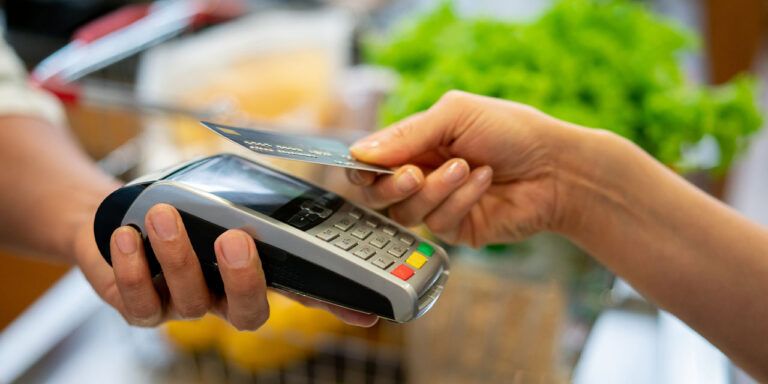Grocery trends from the COVID era
Apr 12, 2021 • 4 min
The COVID era has seen interesting innovations from companies responding to a rapidly changing business environment. Although many of these businesses may revert to regular operations as life returns to normalcy, some will hopefully have the courage to continue their experiments. Just like in my last post with the online trials of JD.com after the SARS outbreak of 2003, some ideas may seem inefficient at first. However, if there is customer traction, there is long-term potential.
Here are four interesting trends for grocery retailers to follow in the coming years. Even though all of these may not turn out to be significant for the industry, some can eventually become important growth opportunities.
1. Groceries Becoming the Leader in Online Logistics
With high weekly purchase frequencies, groceries are on a different level from other retail categories. Groceries have also traditionally been one of the few categories where home delivery has been the preferred option over “click-and-collect.” With high volumes of home deliveries, other online orders could be shipped together with little added cost. Is this the reason why Amazon is eagerly investing in groceries? To increase buying frequency and get more volume, and thus efficiency, for deliveries?
Some on-demand delivery services, like Instacart, DoorDash, Foodora, and Wolt, have already added all sorts of retail products to their delivery offerings.
2. Meal Kits Surging as Market Disruptors
Meal kits were fading into a niche category of the grocery industry until COVID changed this dramatically. HelloFresh, the biggest meal kit company in the world, more than doubled their revenue during 2020.
The meal kit model’s biggest benefit is that it is operationally more efficient than the traditional online grocery, though, the concept lacks the traditional supermarket’s breadth and immediacy.
Traditionally, market disruptors have served a limited niche of the market, but have done it more efficiently than the established players. Disruptors are also usually ignored by the established players, as they serve only a part of the customer needs in the market. To tackle this handicap, some meal kit companies have diversified their offering to sell groceries.
The efficiency of the meal kit model and the great data provided by direct customer engagement could make meal kits an exciting option for some players in the food value chain. For example, a fast-moving consumer goods (FMCG) brand could get valuable information and customer data through acquiring a meal kit business.
3. Brands Acquiring Companies to Sell Directly to Customers
Last year we saw some huge FMCG brands such as Pepsi, Heinz, Heineken, and Nestle pushing towards direct-to-consumer offerings.
These brands’ motivation is not to generate revenue and compete with the grocery retail channel, but to generate a deep understanding of customer behavior. In the future, brands won’t need to rely on surveys to develop customer insight, since data can be collected from customers within their own channels.
This will also deepen the loyalty for the brand, and it will be interesting to follow how brands keep developing their direct channels. Will there be a brand in the future for whom the direct channel represents a significant part of the total revenue, as it does currently for Apple or Nike? After all, the brand who owns the customer interface gets to engage with the customer. The company who engages with the customer gets to create the tone of the customer experience and collect the most detailed data from the consumer.
4. Restaurants Widening Their Product Offering
The biggest casualty from COVID-19 within the food sector has been restaurants. When revenues declined rapidly, companies were forced to innovate and venture beyond on-demand deliveries. These new offerings included selling products in grocery stores, creating meal kits out of restaurant meals, and, most interestingly, selling food ingredients to customers.
These offerings provided the restaurants with additional revenue and opened them up to new ways of serving their customers’ needs more widely. As the restaurant industry has gradually taken more share of customers’ wallets over the last 30 years, grocers have taken notice. Many high-end grocers have started to offer customers ready-to-eat food, such as pizza, sushi, and salads, to compete.
Just as grocers have entered restaurants’ turf, restaurants could do the same. After all, larger restaurant chains have high volumes of purchasing from suppliers, and this quantity could enable them to source with competitive prices. Selling ingredients would increase the overall value of the customer relationships and increase the purchasing frequency, eventually lower sourcing costs.
Fast-casual chain Just Salad has been an interesting front runner in innovating this different kind of future. They have combined their various offerings under one brand, Housemade, with whom customers can buy ready meals, meal kits, and groceries. This strategy will increase the odds that Just Salad can serve more of their customers’ food-related needs.
It will be interesting to see if and how more companies enter the realm of selling groceries. Traditional supermarkets have sold groceries more or less the same for decades (only varying the size of the assortment and store). Restaurants, meal kit providers, and FMCG brands will approach the same phenomenon of selling groceries differently and lead to new concepts and business opportunities to serve customers in fresh and more competitive ways.



